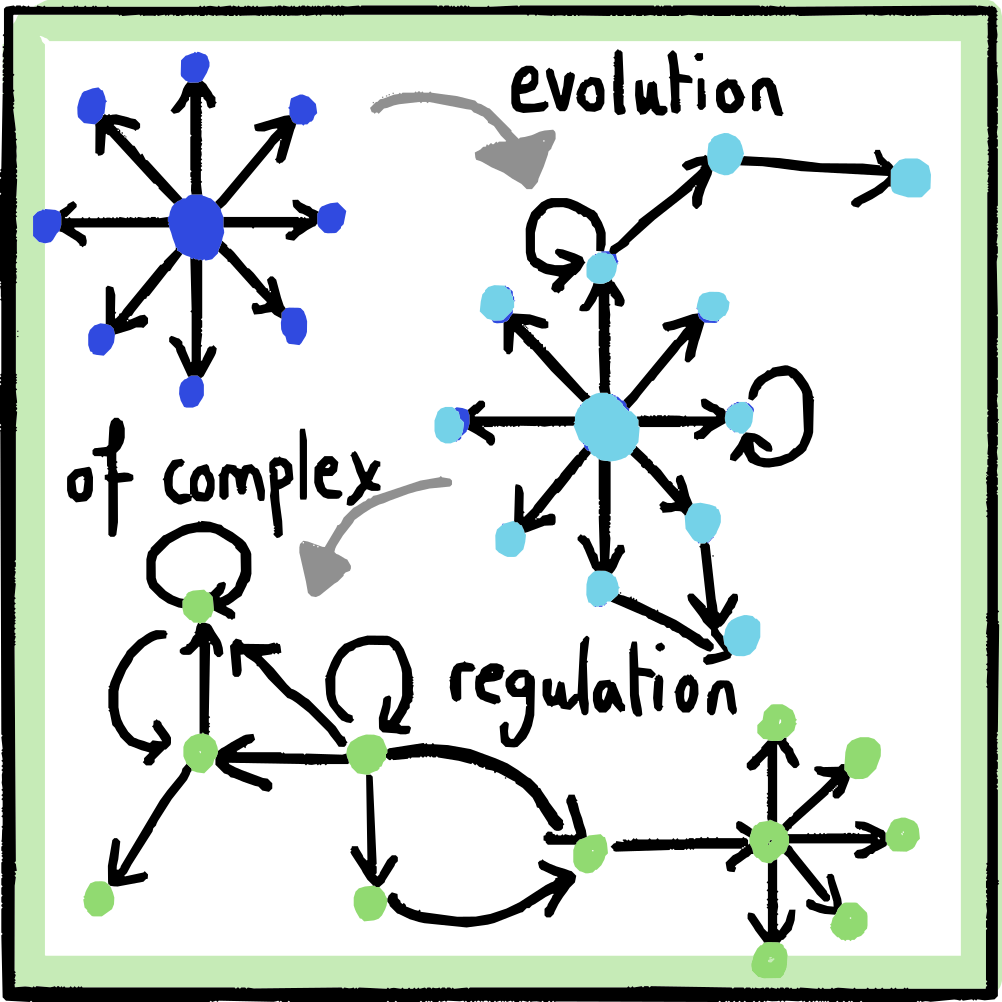the evolution of regulatory systems
Regulatory systems are all around us—from gene regulatory networks in cells, to code of law in societies, to the rules dictating how sports are played. The role of a regulatory system is to maintain robust system function, whether counteracting internally deleterious characteristics or noise that is changing the environmental context a system exists in. Regulatory systems are often studied on a case-by-case basis, without attempting to explore general regulatory principles that might unify regulation across different contexts. What similarities might be shared between radically different complex systems? What differences in regulatory architecture explore core differences in the function of different complex systems?
By collecting data across diverse systems, the $R^3$ Lab is interested in exploring the evolution of different regulatory systems in time and for increasing size, and constructing universal theories of regulatory function. Initially, this involves characterizing the evolution of diverse systems on a case-by-case basis, and constructing a taxonomy and vocabulary to discuss regulatory function in an interdisciplinary way. Currently, we are exploring evolution in code of law (the U.S. Code), gene regulatory networks, and sports (cricket and rugby).
The $R^3$ Lab is currently researching several questions on the evolution of regulatory systems:
- What mechanisms allow gene regulatory networks to evolve in the presence of noise?
- Can we build a vocabulary to discuss the evolution of the rules of sports using the framework of evolutionary biology?
- What are the limits of analytic approaches to understanding the role of mutational bias in simple models of neutral evolution?

Research from the $R^3$ Lab on the evolution of regulatory systems:
- Holehouse, J., Jeong, D., Yoon, J., Kempes, C., West, G. B., & Youn, H. (2025). A Century of Evolution in the Complexity of the United States Legal Code. arXiv preprint arXiv:2507.14342.
- Holehouse, J. (2024-present). The Sports Rules Project.
- Chia, D., Youn, H., West, G.B., Jeong, D., Holehouse, J. (2025). The evolution of the rules of cricket. Working paper.
- Estrella, L., Muratore, D., Kempes, C., Holehouse, J. (2025). How do gene regulatory networks successfully evolve in the presence of extreme environmental noise? Working paper.